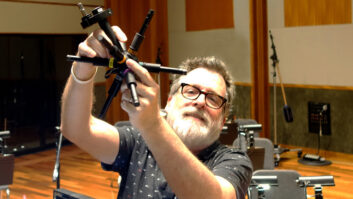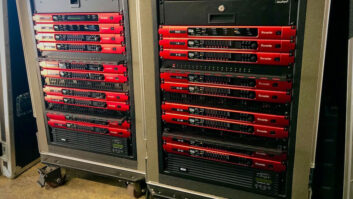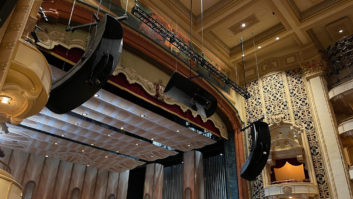Photo: Imgur
It was quite sad to hear that RadioShack would ultimately close approximately 2,400 stores upon filing Chapter 11 bankruptcy. After all, like many of you, RadioShack was always “my store.”

Most notably I had the “150-in-One Electronic Project Kit” and a TRS-80 that I shared with my sister. Along with the record store, RadioShack was a regular stop any time I had a ride to the mall. It was the source of solutions for any audio- or music-oriented projects I happened to be working on; in a small town, seven days a week, I could most always find the connector or cable I needed. Then after college, RadioShack paid me; while working for free at Masterfonics—interning, waiting and jockeying for a open position—I was a part-time sales associate at the Cool Springs Galleria RadioShack in Franklin, TN. Most of the time, it was a pretty fun job. Besides those browsing phones, most folks that came into the store were a lot like me and I was able to help them with their projects, too.
Skimming the Wall Street Journal last night, I came across Christopher Mims’ insightful article on RadioShack’s demise, “RadioShack Suffered as Free Time Evaporated,” in which he traces its decline alongside the steady decline of leisure time amongst average, middle class Americans. To me, this theory makes all the sense in the world, and it even explains some other disturbing trends I’ve observed in our modern pro audio industry but just couldn’t put my finger on.
“In 1979 the average worker put in 1,687 hours a year, according to the Economic Policy Institute, and by 2007 that number was 1,868. The net difference, 181 hours a year, represents more than a month of extra work every year.
“Not coincidentally, the 1970s were RadioShack’s biggest decade, and at one point the chain was opening three stores a week. At its peak, it had 7,000 stores. That success was built primarily on the back of citizens’ band radio hobbyists, who bought components from the store and relied on the knowledge of its staff, many of whom were franchisees and devoted hobbyists themselves.”
Read it and consider: is RadioShack our canary in the coal mine? Yes, there are the pros, and the “pro” stores. But where did the pros come from, and how did they hone their skills? Most likely, copious amounts of good old healthy free time.
Personal, not-for-profit projects require blocks of free time—to think, to experiment, to create. And electronic projects—whether one, 150-in-one or literally thousands over a lifetime—require time as well as a ready source of both components and inspiration. In RadioShack, we’re losing a big one, and I hope its replacement isn’t more ubiquitous tech specifically designed for multi-tasking and saving time—and more time at work.
—Strother Bullins is the Reviews Editor for NewBay Media’s AV/Pro Audio Group.
What are your memories of Radio Shack? Do you think its closure is symptomatic of the modern world’s expanded work day? Share your thoughts in the comments below!







